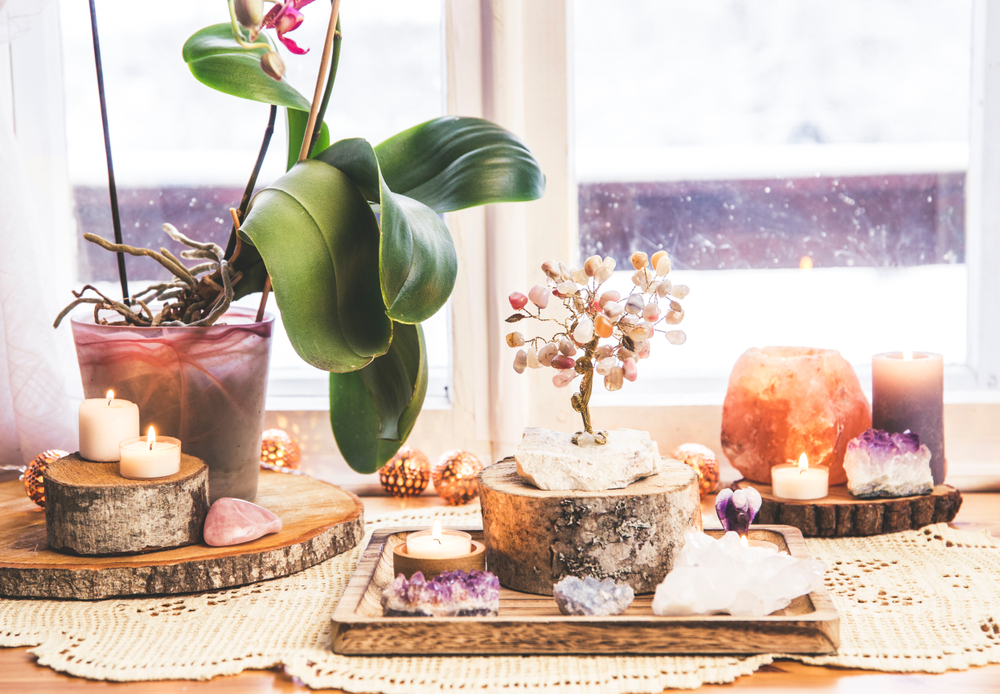
Feng shui is a few thousand years old. But whether in 2021 BC or 2021 CE, one goal has stayed the same: creating indoor spaces that harmonize with nature. To achieve this, practitioners consider vital energies that flow through the entire world. Attracting and promoting the flow of these energies is key, but it’s important to know how they work. Fire is an element in traditional Chinese cosmology, but there is also fire in feng shui.
Cycles of Creation and Destruction
Fire is one of five elemental phases that make up the Wu Xing. Encyclopedia Britannica explains that the Wu Xing describes how changes happen in the universe. These elemental phases can create or destroy, depending on the order in which they occur. Traditional Chinese philosophy sees these as cycles of generation or overcoming. Both cycles start with wood but place the five phases in different orders.
Xiāng shēng is the “mutual generation” cycle, with one phase generating the next. Fire is the second element here; wood fuels fire, which can create earth through ashes or lava. Xiāngkè is the cycle of “mutual overcoming,” in which each phase prevails over the next. Fire is the penultimate phase in this cycle. Water can extinguish it, but it can also melt metal.
Fiery Feng Shui Basics
Taoist cosmology assigns seasons, color, and cardinal directions with every elemental phase. Architect and consultant Anjie Cho mentions that feng shui’s energy map has nine sections, each associated with a core area of life. Fire belongs in the top middle, which corresponds to the fame section of the energy map. Fame, recognition, and reputation are all tied together. It’s not just about how you’re seen, but how you want to be seen.
In a piece for The Spruce, Cho discusses fire in feng shui in more detail. It stands for inspiration, expression, and passion. Red is its primary color, but other fiery hues include orange and bold yellow. Red-based purple and pink shades are also spot-on for the fire element. Triangles are natural fire shapes: Consider a candle’s flame or a blazing bonfire and you get the idea. In the feng shui world, fire lies due south on the map.
Creating a Fiery Space
Feng shui practitioners typically have two primary goals. The first involves drawing the right kind of energy into a particular space. The fame area calls for fire, and you need to include colors, shapes, and objects that correspond to fire in feng shui.
Incorporating those items can be pretty easy. You have a wide variety of options for making your space more fiery. You can try painting your walls. Red, orange, and purple are bold shades, but Cho suggests painting an accent wall in one of those colors if you can’t do an entire room.
Artwork, furnishings, and flowers are more great ways to bring fiercer hues, but you can also play with shapes. Consider triangular patterns in fabrics, wallpaper, and art prints. Triangle-shaped objects also add fire energy–think paperweights, small sculptures, or bookends.
Candles are an obvious way to include fire. If that’s not doable, think more broadly. Cho points out that light boosts fire energy, so lamps and light fixtures are excellent options. She suggests lighting objects that direct the light upward, just as flames reach towards the sky.
Handling Fire With Care
Humans associate fire with passion, energy, and vitality. But in feng shui, fire plays an especially important role. Associated with reputation and fame, fire can represent part of the human spirit. It is the force within us that strives for achievement and recognition. Yet as with all aspects of our natural world, we must handle it with care. Whether in feng shui or other areas of life, harnessing fire wisely can bring the results we desire.

